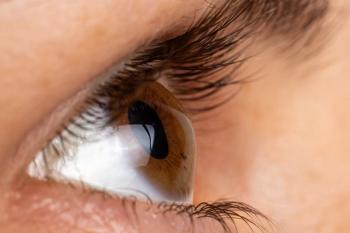
New horizons in interventional glaucoma
Procedures in the pipeline hold greater appeal for cataract and refractive surgeons, patients.
Interventional glaucoma is often described as a proactive rather than reactive mind-set, with a more aggressive approach to early procedural intervention over a reliance on polypharmaceutical options in the mild to moderate spectrum of glaucoma. It encompasses laser treatments, novel drug delivery systems, and the large and growing category of minimally invasive glaucoma surgery (MIGS).
Many of the current MIGS procedures must be performed at the time of cataract surgery or require a clear corneal incision, which puts them squarely within the purview of cataract surgeons. However, there are several barriers that have contributed to slower adoption of the interventional glaucoma mindset:
- Procedural muscle memory. Confidence, not only in performing a procedure, but in its efficacy and safety, comes with repeated use in practice. When I try out a new development in cataract surgery, I might perform it in a large fraction of my 100-plus procedures within a month, rapidly gaining experience and confidence with that new device or technique. While early-stage glaucoma procedures are within the skill set of a comprehensive cataract surgeon, more limited exposure to them in a cataract surgeon’s day-to-day practice just means that it takes us longer to build that confidence.
- Lack of understanding of which patients are the best candidates for which procedure.
- Practice protocols that aren’t glaucoma-focused. Glaucoma testing may not be part of a cataract surgeon’s routine screening, and appropriate follow-up for glaucoma may not fit easily in the flow of a typical cataract and refractive practice.
- Lack of familiarity with gonioscopy and/or visualization and identification of the anatomy of the angle.
Of course, these barriers are surmountable with education. I personally perform MIGS procedures regularly and have become an enthusiastic proponent.
Laser in the limelight
The Laser in Glaucoma and Ocular Hypertension (LiGHT) study recently showed that selective laser trabeculoplasty (SLT) provides better long-term disease control than initial drop therapy, with reduced need for incisional glaucoma and cataract surgery over 6 years—and that it is more cost-effective than drops.1 This has renewed interest in existing laser treatments for glaucoma, as well as in several new technologies making their way through the regulatory process.
Specifically, there are 3 new technologies that use the lasers we cataract and refractive surgeons are most familiar with: femtosecond, excimer, and Nd:YAG lasers. They also have the potential to be less invasive and/or easier to integrate into clinical practice.
The first of these is a femtosecond laser technology developed by the same scientist who was instrumental in bringing femtosecond lasers to cataract and LASIK surgery, Tibor Juhasz, PhD.
Now the CEO of ViaLase, Juhasz and his colleagues have combined laser technology with integrated optical coherence tomography for performing the first femtosecond laser image–guided high-precision trabeculotomy, or the FLigHT treatment (Figure 1). Perhaps the greatest advantage of the FLigHT treatment is that it provides a way to create nonincisional and noninvasive trabecular meshwork (TM) drainage channels without damaging adjacent tissues.
The onboard proprietary advanced imaging system also helps with visualization challenges inherent in many other glaucoma procedures. In a 2-year pilot study being presented at this year’s American Society of Cataract and Refractive Surgery meeting, ViaLase demonstrated an excellent safety profile and observed a reduction in mean IOP from baseline, at every time point.2 It also has the potential to be performed either as an ASC environment or in an office, as a stand-alone procedure, which would be a great addition to our glaucoma treatment options. A multicenter, randomized, controlled trial to assess the safety and efficacy of the ViaLase FLigHT treatment is currently underway.
On the excimer laser front, Elios Vision is developing a device for excimer laser trabeculotomy. In this microinvasive, implant-free procedure, the surgeon inserts an excimer laser probe through a 0.8- to 2.5-mm clear corneal incision under gonioscopic or endoscopic visualization (Figure 2).
Laser energy is used to create a series of 10 microchannel openings (210 µm each) over 90 degrees of the TM to restore aqueous outflow. The procedure has been performed for several years already in Europe with or without cataract surgery. The data show IOP reduction up to 8 years postprocedure, along with a significant reduction in medications across a range of patient types.3 Elios is now conducting a multicenter, single-arm,
open-label study in the US in patients with mild to moderate open-angle glaucoma in conjunction with cataract surgery only.
Finally, there are also developments with Nd:YAG lasers for SLT. In an attempt to overcome some of the gonioscopy challenges of the current SLT procedure, Belkin Vision has developed its Eagle system for direct SLT, an automated, noncontact procedure performed through the limbus. The first prospective clinical trial results were promising4 and a 12-month safety and efficacy study, the multicenter, controlled GLAUrious trial, is underway.
We know from cataract and corneal refractive surgery that the “high-tech” nature of laser treatments is very appealing to our patients. In order for these procedures to fit well into the fast-paced environment of a typical anterior segment practice, companies will also have to provide not just surgical training, but also guidance on staff training, practice integration, and workflow. As clinical trials progress, I look forward to seeing more information about efficacy, safety, and patient acceptance, but I am optimistic that new laser approaches to glaucoma may open the gates for more ophthalmologists to make the leap into interventional glaucoma.
Neda Shamie, MD
E: ns@maloneyshamie.com
Shamie is a partner in the Maloney-Shamie Vision Institute and a clinical professor of ophthalmology at the Keck School of Medicine, University of Southern California, Los Angeles, California. She has no financial relationships to report with any of the companies or products mentioned in this article.
References:
Gazzard G, Konstantakopoulou E, Garway-Heath D, et al, for the LiGHT Study Group. Laser in Glaucoma and Ocular Hypertension (LiGHT) trial: six-year results of primary selective laser trabeculoplasty versus eye drops for the treatment of glaucoma and ocular hypertension. Ophthalmology 2023;130(2):139-151. doi:10.1016/j.ophtha.2022.09.009
Nagy ZZ, Kranitz K, Ahmed IK, et al. First-in-human study of femtosecond laser image guided high-precision trabeculotomy (FLigHT) for glaucoma treatment: 2-year outcomes. Presented at: 2023 American Society of Cataract and Refractive Surgery Annual Meeting; May 5-9, 2023; San Diego, CA.
Durr GM, Töteberg-Harms M, Lewis R, Fea A, Marolo P, Ahmed IIK. Current review of excimer laser trabeculostomy. Eye Vis (Lond). 2020;7:24. doi:10.1186/s40662-020-00190-7
Goldenfield M, Belkin M, Dobkin-Bekman M, et al. Automated direct selective laser trabeculoplasty: first prospective clinical trial. Transl Vis Sci Technol 2021;10(3):5. doi:10.1167/tvst.10.3.5
Newsletter
Want more insights like this? Subscribe to Optometry Times and get clinical pearls and practice tips delivered straight to your inbox.













































